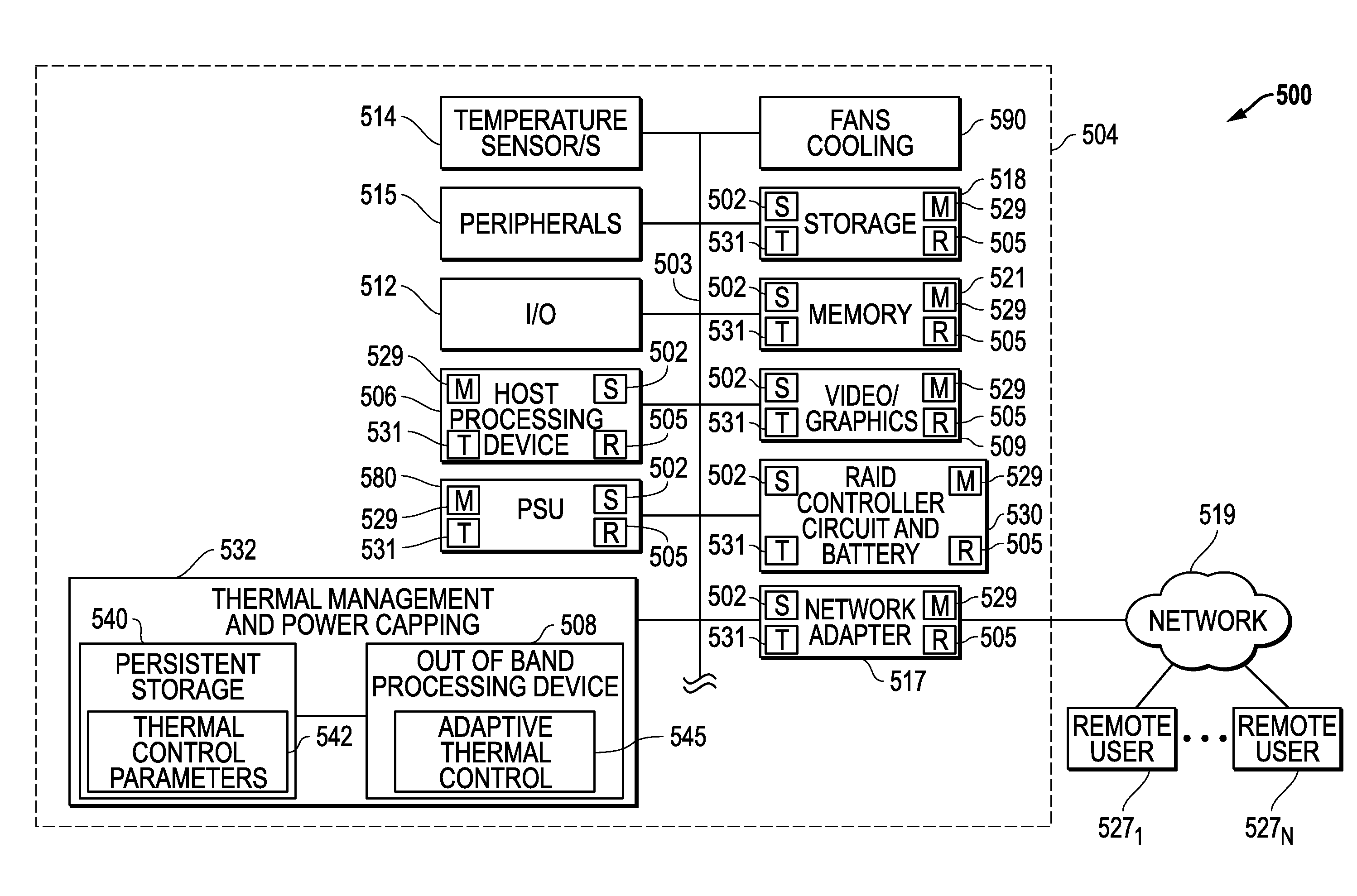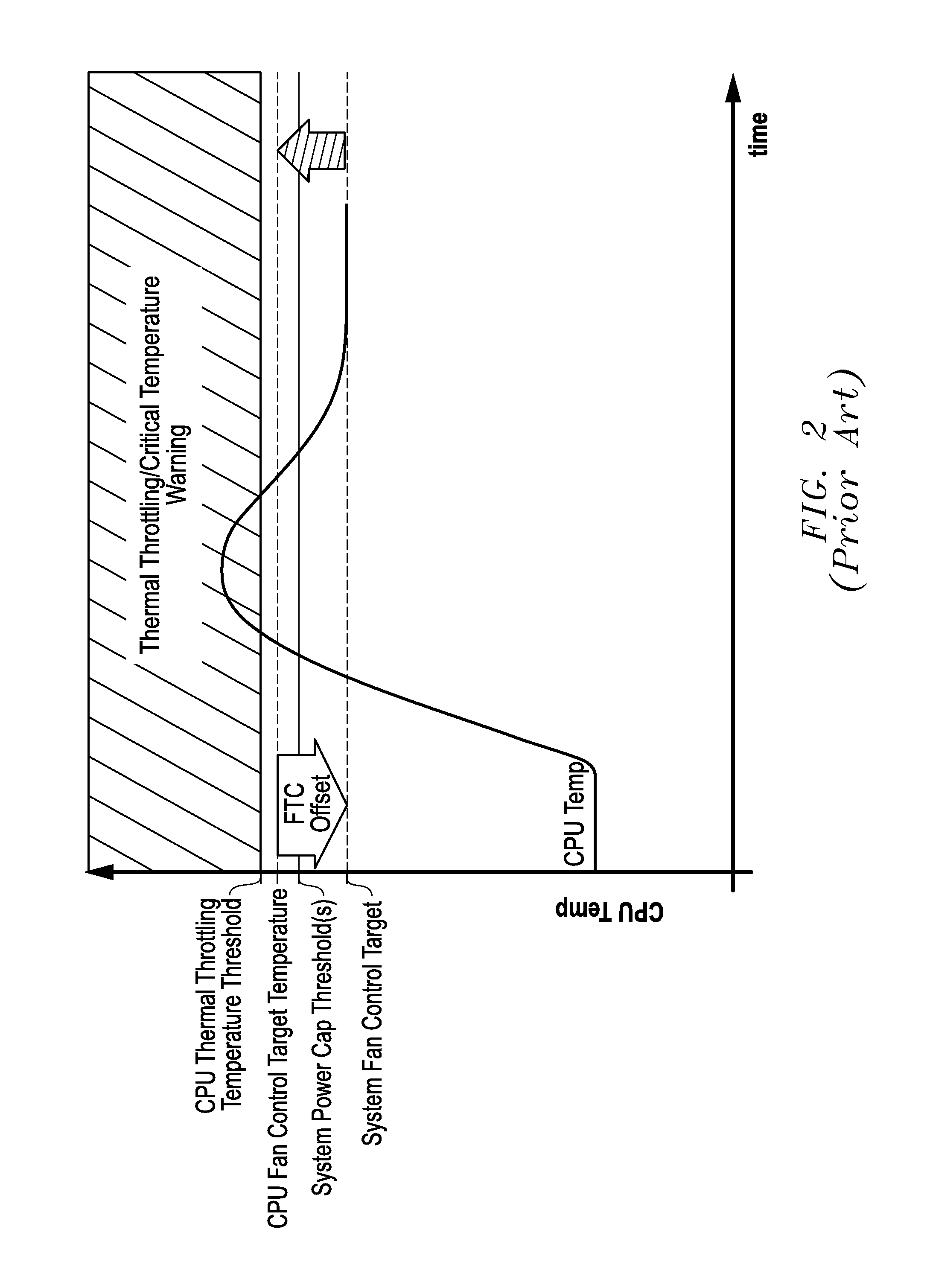Systems And Methods Of Adaptive Thermal Control For Information Handling Systems
- Summary
- Abstract
- Description
- Claims
- Application Information
AI Technical Summary
Benefits of technology
Problems solved by technology
Method used
Image
Examples
Embodiment Construction
[0046]FIG. 5 illustrates one exemplary embodiment of an information handling system platform 500, configured in this embodiment as a server platform. As shown, system platform 500 includes heat-producing electrical components and one or more cooling fans 590 configured to cool the heat-producing components. The heat-producing components may be contained within an enclosure 504 (e.g., such as a 2U, 3U, 4U, etc. computer chassis) and cooled by the one or more cooling fan / s 590 in a manner as described below. Examples of heat-producing components illustrated in the embodiment of FIG. 5 include one or more in-band host processing devices 506 (e.g., CPU executing host operating system), video / graphics hardware (e.g., video card / s) 509, storage (e.g., one or more HDDs) 518, memory (e.g., RAM) 521, RAID controller 530, network adapter 517 and system power supply PSU 580, although other types and combinations of heat-producing components are possible. Additional components that may be prese...
PUM
 Login to View More
Login to View More Abstract
Description
Claims
Application Information
 Login to View More
Login to View More - R&D
- Intellectual Property
- Life Sciences
- Materials
- Tech Scout
- Unparalleled Data Quality
- Higher Quality Content
- 60% Fewer Hallucinations
Browse by: Latest US Patents, China's latest patents, Technical Efficacy Thesaurus, Application Domain, Technology Topic, Popular Technical Reports.
© 2025 PatSnap. All rights reserved.Legal|Privacy policy|Modern Slavery Act Transparency Statement|Sitemap|About US| Contact US: help@patsnap.com



